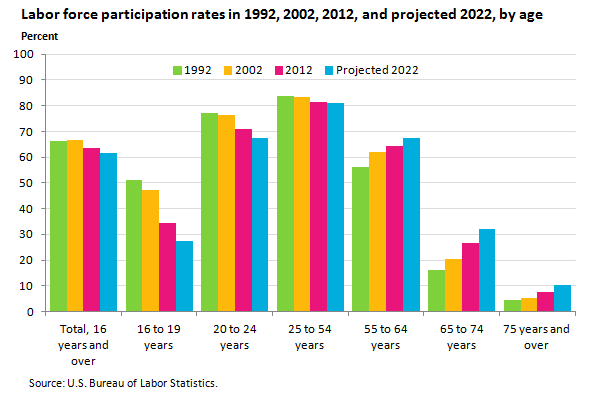Millenials Beware: America’s Workforce is Getting Older

The percentage of older American workers is growing quickly, while the rate of younger people in the workforce is decreasing, thanks to job scarcity and more time spent in school.
By 2022, nearly a third of the workforce will be in their 50s, 60s and 70s as the proportion of workers in their 20s will be lowest it has been since 1969.
According to a Pew Research Center study released Wednesday morning, data from the U.S. Bureau of Labor Statistics shows that the number of working Americans over 55 years old will grow quickly over the next decade.

Most of the increase is thanks to people between the ages of 65 and 74 years old (who are between 57 and 66 today). In 2002, these workers made up just 20.4 percent of the workforce, but 10 years from now they will account for 31.9 percent.
This generation is staying at work longer than others in their age have done in the past. A lagging U.S. economy is partially at fault. Lower government benefits and job scarcity have compelled many to keep working into their 60s and 70s.
On the bright side, the increase also comes from a larger amount of women joining and remaining in the workforce. Plus, older Americans are generally healthier now than ever before, and more willing to keep working. A 2009 Pew study showed that 53 percent of workers 65 and older at that time were keeping their jobs because they wanted to work, while just 17 percent said they were compelled for financial reasons.
Meanwhile, workers between the ages of 20–24 will represent just 67.3 percent of the workforce, down from 76.4 percent two decades earlier. One of the main reasons is that they are the most-educated generation. A 2012 Pew study shows that more young adults than ever before are completing high school and college, which means they’re staying out of the workforce much longer than their parents or grandparents.
© Copyright IBTimes 2025. All rights reserved.






















